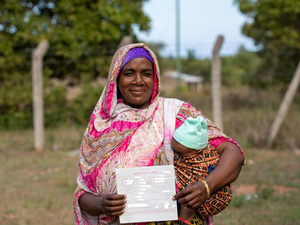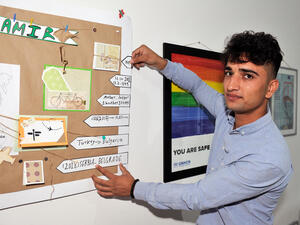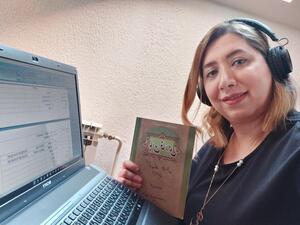Kosovo Crisis Update
Kosovo Crisis Update
Returns
Just 4,527 refugees returned from neighbouring countries over the 3-day period 23-25 July, while returns from abroad gathered pace. No repatriation flights took place on Sunday, but on Friday 23 July and Saturday 24 July, around 1,700 refugees returned from other European countries, with their travel organized by IOM.
The first UNHCR/IOM-assisted repatriation flights from Turkey took place on 23 July. Two flights from Corlu to Skopje carried 340 passengers. IOM-assisted returns began from Croatia on 22 July, with 120 persons returning on a chartered Croatian airlines flight, and a further 154 on 23 July. The first planeload of Kosovars returning from the USA is due to leave New York today for Skopje.
The French government has said it is considering to allow Kosovars who were evacuated to France to make assessment visits to Kosovo before returning definitively. IOM is discussing transit arrangements for such "go and see" visits with the authorities in Skopje.
KFOR hopes to be able to open Pristina airport in early August, which would make it possible for some of the repatriation flights (those which use smaller aircraft) to travel directly to Pristina.
Kosovo: Insecurity
The massacre late on Friday 23 July of 14 Serb farmers as they worked in their fields outside the village of Malo Gracko, near Lipljan, has been widely condemned, including by High Commissioner Ogata, who is currently in New York. Mrs. Ogata has said that she is "shocked and saddened" by the incident. KFOR and the International Criminal Tribunal for the former Yugoslavia have launched an investigation into the killings.
Throughout the province, Serb and Roma communities continued over the past week to be victims of violent acts, including theft, physical assault, arson, kidnapping and murder. As a result, Serbs and Roma have been on the move in search of safety, both within Kosovo and to Serbia, Montenegro and the former Yugoslav Republic of Macedonia.
Some examples from the days preceding the massacre in Malo Gracko: four elderly Serb women were attacked in their home in Pristina last week; an elderly Serb couple in Podujevo was attacked and their house burned. Five house fires and two mortar attacks were reported in Urosevac on 22-23 July, and an explosion in a Serb Orthodox church 7 km north of Stimlje. On 22 July, 16 Serbs left Urosevac for Serbia. In the night of 22-23 July, 87 Roma fled their homes in Vucitrn following arson and other incidents. 70 went to Zvecan while 17 sought protection from KFOR near Vucitrn itself. Altogether around 200 Roma are taking shelter in Zvecan.
UNHCR is continuing efforts to help the small number of Croatian Serb refugees who remain in Kosovo, moving them from vulnerable areas to "safer" zones. There are also a large number of Serb internally displaced people in the Urosevac and Kosovo Polje areas, whose homes are mainly in Kacanik, Stimlje, Strpce and Pec.
The killings in Malo Gracko put on hold the signature of the long-awaited "freedom of movement" agreement in Mitrovica. Serbs live on the north side of the Ibar bridge, now an ethnic divide. In Leposavic, north of Mitrovica, the Yugoslav Red Cross operates a transit centre for fleeing Serbs, and another 80 Serb displaced live in a school which needs to be vacated before September when classes should begin. According to the Red Cross, 1,300 Serb displaced are also housed in host families and there are around 400 Serb refugees from the earlier wars in Croatia and Bosnia and Herzegovina as well as around 400 displaced Roma.
At the same time an estimated 4,500 ethnic Albanians from Serbia proper have moved into Kosovo, coming from the Presevo, Bujanovac and Miratovac areas.
Kosovo: Shelter, education and health
Shelter repair and reconstruction material remains in great demand in Kosovo. The second phase of UNHCR's "rapid village assessment" of the state of 500 villages has been completed and results will be published on 27 July.
UNHCR staff reported on the weekend that Srbica, which was a ghost town one year ago, is now bustling with people and repair work on many buildings is underway. But staff who visited the village of Cabra, west of Kosovska Mitrovica found it reduced to piles of debris. Villagers told them that the shelling of their hamlet began at 3 a.m. on 29 March. The villagers fled to the hills and Serbian forces then burned and bulldozed their houses. Some men have returned, at least in the daytime, sheltering in blue UNHCR tents wedged between the heaps of rubble. Returnees are wondering where and how to begin to rebuild a village which used to have 175 houses, a school and a clinic.
A UNICEF preliminary survey of Kosovo's primary schools has found widespread destruction. Of the 394 schools assessed in 16 of Kosovo's 29 municipalities, 43% are completely destroyed or severely damaged, 38% need new roofs, and 42% need to be checked for/cleared of mines. Only 2% of the schools have functioning indoor toilets. Virtually all of them need desks, chairs and blackboards. Despite the destruction, UNICEF is committed to having all primary school children back in the classroom in September.
A meeting organized by WHO in Skopje on 21-22 July brought together major donors, NGOs and U.N. agencies to discuss the future of Kosovo's health care system, including hospital management, provision of drugs and financing of the system (including salaries). Meanwhile, NGO mobile clinics have achieved coverage of more than two-thirds of the province. Water and sanitation experts continue to tackle the problems of solid waste disposal, clean potable water and the removal of bodies from wells throughout the province.
Kosovo: Survey of information needs
UNHCR's partner, the NGO Media Action International (MAI), conducted a survey in Kosovo in mid-July to assess the information needs of the population, and their access to information sources. Survey work was concentrated in the urban areas of Pristina, Pec, Djakovica, Prizren and Mitrovica.
Radio proved to be the most trusted source of information (44%), followed by television (37%). Only 15% found newspapers a trustworthy source. One quarter of all polled said they had no information about humanitarian activities in Kosovo; this figure rose to 36% in Mitrovica, where possession of radios was particularly low. 60% of those polled in Mitrovica did not own a radio, compared to 42% in Pec, 33% in Pristina and 20% in Djakovica. By contrast, nearly everyone polled in Prizren had a working radio.
Foreign radio stations broadcasting in Albanian or Serbo-Croat languages had a higher "trust level" than local radios, with the broadcasts of Deutsche Welle polling the highest.
The three key information needs which emerged from the survey were for information on missing persons (including identification of the dead and on prisoners), on reconstruction and on issues pertaining to the civil administration and law and order. A second cluster of information needs emerged as follows: war crimes and justice, land mines, education, employment and the economy, health care and humanitarian aid.
Albania
UNHCR has begun to broadcast and publicize a message to Kosovar refugees planning to stay in Albania for the time being, to inform them that they must obtain a refugee card issued by UNHCR. The message specifies that the cards are free, and that starting today they will be issued to any remaining refugees staying in the prefectures of Tirana, Durres, Shkodra and Lezhe. Other prefectures will follow.
Security for humanitarian work continues to be a major concern. Following an attack last week on an NGO convoy travelling from Albania to Kosovo, and after intervention by UNHCR, Albanian police agreed to provide escort for convoys between Tirana and Morini (Kukes), seven days a week. Very early Friday morning (23 July) an NGO convoy was stopped by robbers outside Tirana. Equipment and personal belongings of the drivers were taken, and three Kosovars were briefly abducted, although they were found unharmed shortly thereafter.
A meeting of Albania's Emergency Management Group with donor countries and international agencies in Tirana on 27 July will address the need for post-emergency rehabilitation, seen as a crucial indicator of the degree of commitment of the international community, in the aftermath of the refugee crisis. UNHCR's Tirana office continues to take the lead in encouraging donors to commit funds so that rehabilitation projects can take off rapidly.









